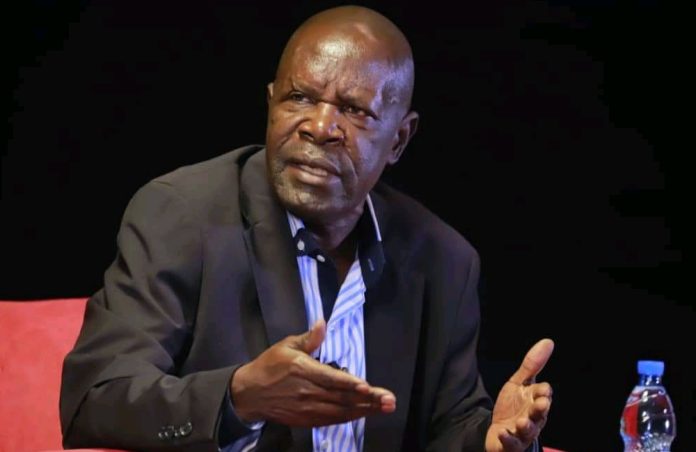In what could pass for a subtle rant, government mouthpiece, Ofwono Opondo voiced his concerns at what he termed ‘flip-flopping” by Ugandan ministers on the Murchison Falls issue. He echoed many of Ugandan’s cries on the issue surround falls being reduced to a dam. The indecision, the sneaky feel of the discussion therein; all of it begs the notion that everything about these events is wrong. Below is what he opined through the government media arm, whereof he is head:
Ofwono Opondo speaks out
In the last three months, Cabinet has vacillated with statements over the possibility of permitting the development of hydro-power dams on Uhuru and Murchison Falls (devil’s cauldron) along River Nile three times. That vacillation is causing anxiety and suspicion that perhaps the government is acting under pressure from a dubious hand, up to no good, and the public is spoiling for a big fight.
The flip-flopping first began when it emerged that a South African company, Bonang Power and Energy Limited had applied to the Electricity Regulatory Authority (ERA) to be granted permission to conduct a feasibility study in order to build a hydropower dam on Uhuru Falls just five hundred meters adjacent to Murchison Falls.
Murchison Falls is the lucrative, and panoramic escapement at which point river Nile gushes its waters with a huge force one hundred forty-three feet down through a seven-meter narrow canyon. Both are located within the expansive Murchison Falls Game Park, currently the biggest tourist attraction for its varied wildlife, game, birds, Sir Samuel Baker trail, river Nile and multiple Falls along its way through to South Sudan, Sudan, Egypt, and into the Red Sea.
Following the public disclosure by ERA as required by law, many Ugandans and other interested parties especially concerned with the environment and tourism expressed strong and widespread opposition to any idea that the site should be sacrificed for a power dam. Indeed ERA conducted its evaluations and issued an outright rejection because, among other things, Bonang didn’t submit legal documents showing its legal status in Uganda, shareholders, share capital, or company directors. The technical evaluation showed that massive water would be diverted upstream of Murchison Falls. At that time ministers promptly came out to assuage public anger that no such development would be considered.
While Cabinet is free to review its decisions, this shift coming after a promise and ERA evaluation, ought to be explained to persuade a suspicious and angry public, considering that Uhuru is so near Murchison Falls. It appears that after the rejection, Bonang went back to some godfather, and hence this reconsideration hoping that the Energy minister can order ERA via cabinet to review its earlier findings.
Yes, a feasibility study is a scientific method to assess a project’s environmental, social, cultural, and economic impact, viability, and sustainability. However, the flip-flop by ministers leaves gaps. And looking back to similar projects like the botched Naguru Housing Estate, Shimon Demonstration School, and most recently the Lubowa Specialised Hospital, ministers and all concerned government agencies ought to come clean and ensure that effective and credible due diligence is exercised and investors are not left to ride rough shoulders as if they are doing Ugandans favors.
The joint statement issued this week by Energy minister Irene Muloni and that of Tourism, Wildlife, and Antiquities, Ephraim Kamuntu leaves more holes gaping than offering a thorough, consistent, coordinated, and persuasive explanation why the change. The statement doesn’t disclose when and why the investor has suddenly shifted interests from Murchison to Uhuru waterfalls. This lack of thoroughness is fueling more suspicion that ministers are responding more to investor pressure than measured considerations.
Secondly, from their own admission in providing the coordinates of the two waterfalls which they say are only five hundred meters apart, it is not hard to see the near impossibility for a large scale construction leaving Murchison waterfalls unscathed as they seem to suggest. And we don’t have to conduct a scientific study to establish that because the construction of Bujagali, Isimba, and the one ongoing at Karuma, for hydropower dams are all available and self-evident to instruct any mind.
Obviously, there shouldn’t be any contention whether Uganda still needs more power dams and energy to power its industrialization and socio-economic transformation. With only a twenty-five percent reach of electricity to Ugandans, we are still too short and need more electricity generation and distribution from multiple sources. As the government through ERA clears Bonang to conduct the study, we must mobilize Ugandans with multifaceted expertise to challenge any findings and where possible use the courts to thwart this dangerous adventure.
But as Muloni submitted in her statement this week, there are other potential sites already identified like Kiba (400MW) Oriang (392MW), and Ayago (840MW) that are non-controversial as Uhuru and Murchison whose development could be undertaken first instead of raising the hubris government is most unlikely to win at this point.
Without being sentimental, the thunderous devil’s cauldron, together with Uhuru, and their Delta areas where the tower of giraffes, antelopes, lions, warthogs, bushbucks, buffalo gangs, school of hippos, bask of crocodiles and over 450 bird species co-exist in the dense forest cover is an amazing natural place. It’s inconceivable that while other countries are building artificial tourism sites, we in Uganda seek to destroy ours more so when there are other alternatives for hydropower dams. Like the government was forced to abandon its plans to give away Mabira forest to the Mehta group in 2011 for sugarcane growing, l believe that with joint, steadfast, and coordinated well-informed efforts, the renewed assault on Uhuru and Murchison Falls too ought to fail.

























